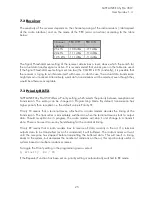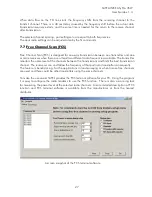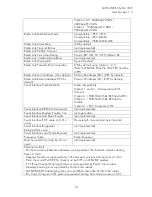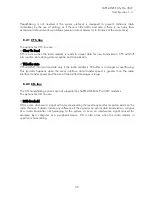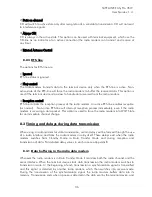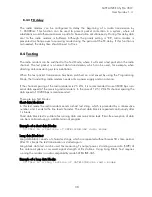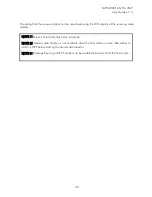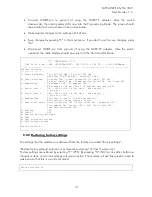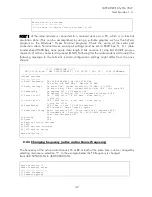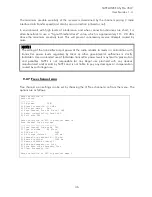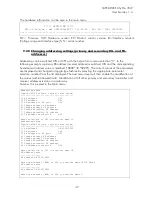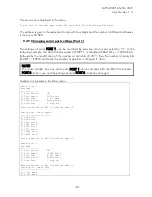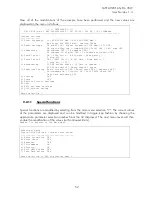
SATELLINE-EASy Pro 35W
User Guide v.1.4
37
after all buffered data has been transmitted. When the serial interface speed is the same or slower
than the speed of the radio interface, the internal transmit buffer memory cannot overflow.
However, when the serial interface speed exceeds the speed of the radio interface, data will
eventually fill transmit buffer memory. In this instance, it will take a moment after the terminal
device has stopped transmission of data for the radio modem to empty the buffer and before the
transmitter switches off. The maximum size of transmit buffer memory is one kilobyte (1 kB). If the
terminal device does not follow the status of the CTS-line and transmits too much data to the
radio modem, the buffer will be emptied and the transmission is restarted.
In the receive mode, the buffer works principally in the above described way thus evening out
differences in data transfer speeds. If the terminal device transmits data to a radio modem in
receive mode, the data will go into transmit buffer memory. Transmission will start immediately
when the radio channel is available.
8.3.2
Pause length
The modem recognises a pause on the serial line (a pause is defined as a time with no status
changes on the RS-232 interface TD-line). The pause detection is used as criteria for:
•
End of radio transmission - When the transmit buffer is empty and a pause is detected, the
modem stops the transmission and will then change the radio to the receive mode.
•
SL-command recognition - For a SL-command to be valid, a pause must be detected
before the actual “SL…” character string.
•
User address recognition - In order for the start character to be detected, a pause must
precede it in transmission.
Traditionally, in asynchronous data communication, pauses have been used to separate serial
messages from each other. However, the use of non-real-time operating systems (frequently used
on PC-type hardware) often adds random pauses, which may result in the user data splitting into
two or more separate RF transmissions. This may cause problems especially in the systems
including repeater stations.
In order to match the operation of the radio modem to the user data, the Pause length parameter
can be adjusted on the programming menu. It may have any value between 3 and 255
characters. The default value is 3 characters.
Notes:
•
The absolute time of Pause length is depending on the serial port settings. For example, 1
character is ~1.04 ms at 9600 bps / 8N1 (10 bits).
•
The maximum absolute time is always 170 ms independent from the value of the Pause
length given in the set-up.
•
An increase in the Pause length increases the round trip delay of the radio link
correspondingly; this is due to the fact that the radio channel is occupied for the time of
the Pause length after each transmission (the time it takes to detect a pause). If this is not
acceptable, the TX delay setting may also be useful in special cases.



